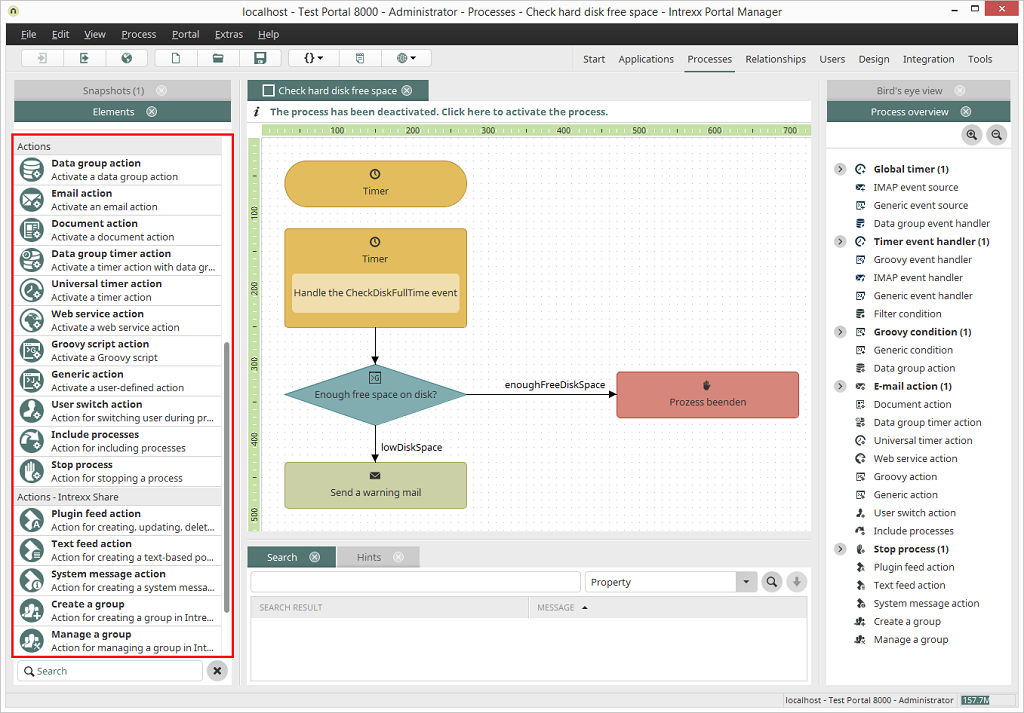Actions
Processes module
Actions can be connected to conditions and / or actions. The following process elements can only be configured if a data group is defined in the process chain to be run:
- Data group action
- Timer action
- Filter condition
Data group action
With a data group action, data records can be inserted or existing data records can be edited or deleted. Data group actions can only be configured if they are connected to a fully configured data group event handler.Email action
With this action, notifications can be sent via email when specific events occur. In order to use this function, the E-Mail-Service must be set up in the Intrexx tools. In order to send emails with links to portal pages via the process, the Base-URL field must be filled in the portal properties with the root URL of the portal (such as http://myportal/). You can reach the portal properties from the Portals module via the menu item Portal / Portal properties. Add an Email Action, and open the properties dialog by double-clicking on the element.Document action
This action allows you to perform event-controlled document generation. The document can be saved directly to a data record. The following requirements must be met before you can use this action:- The desired view page must be activated for document generation.
- A template must be created that contains formatting information for the text.
- A data field of type File, in which the documents are stored, must be present.
Data group timer action
With a data group timer action, you will define atime-controlled event that will be run in the course of the process. The general properties of the data group timer action correspond to the general properties of the global timer. As opposed to the global timer, for a data group timer action a task will only be generated once the timer action is initiated in the process chain. This task will be listed and described in the Tools module. The data group timer action must be connected with a data groups or timer event handler, which reacts to an additional timer action or a global timer with a relation to data groups. When it is initiated, it will generate one task per data record delivered. In the Tools module, the data record GUID will be carried along with each of these tasks. This GUID can be further used in Groovy or generic event handlers.Example:
A data group event handler reacts to a change in reports. The timer should report each unreleased report via email. If you want to react to the data group timer action that you have defined you will require an event handler (timer, Groovy, or generic events handler), which will react to the task that is created via the data group timer action at the defined point in time.